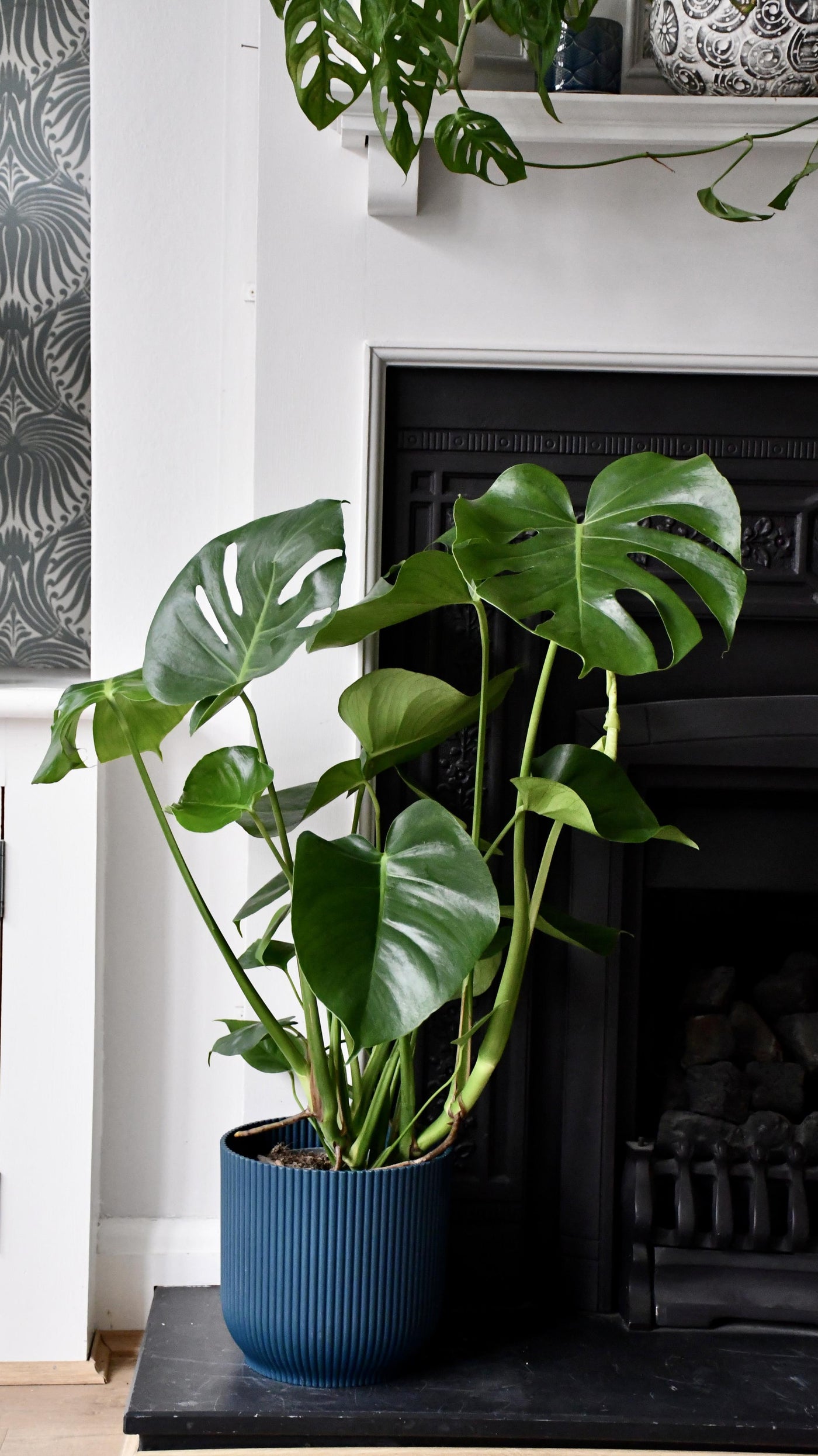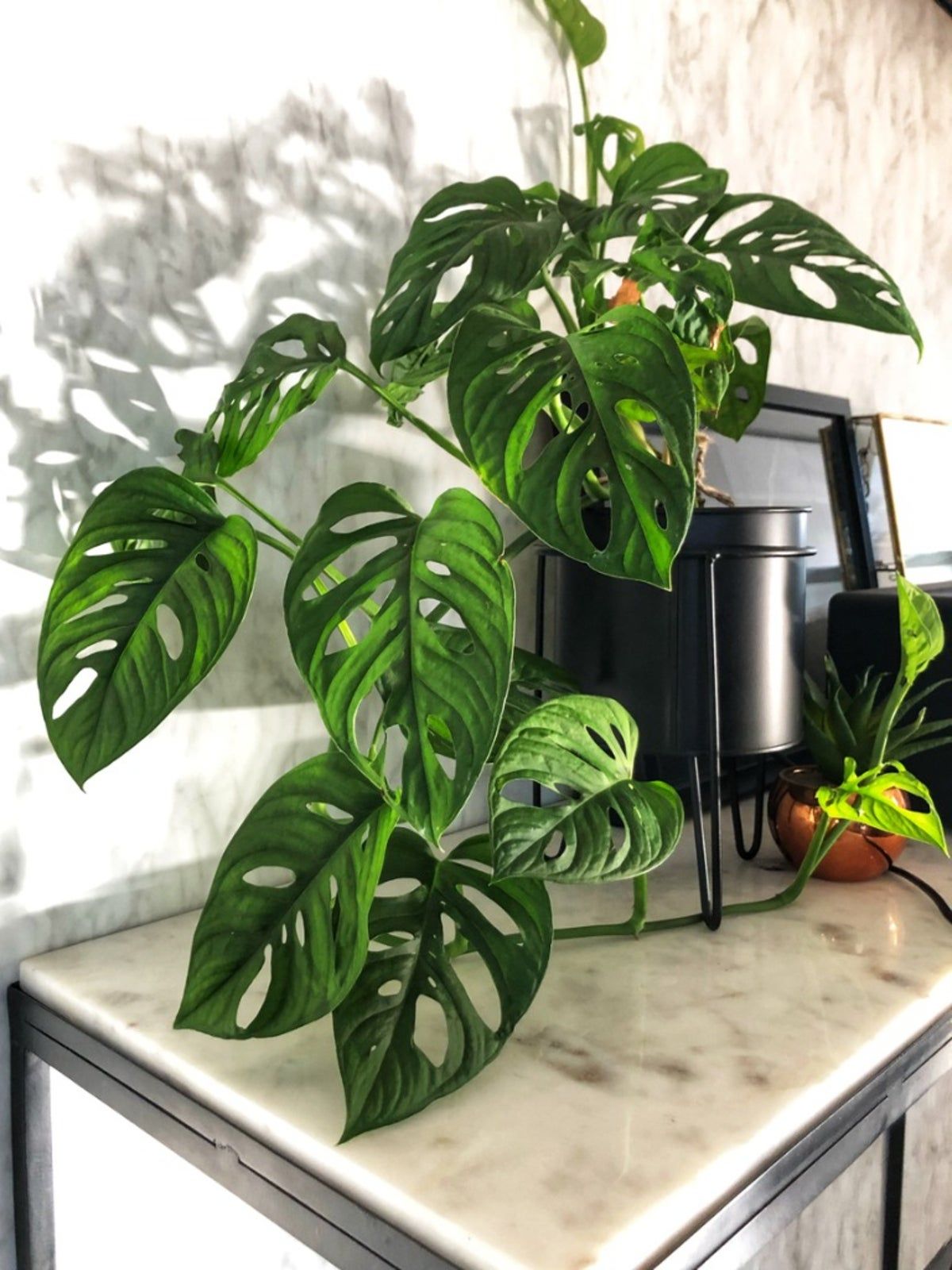The Majestic Monstera Deliciosa: A Deep Dive into the Swiss Cheese plant
The Monstera deliciosa, affectionately known as the Swiss Cheese Plant, stands as a testament to nature’s architectural artistry. With its iconic, fenestrated leaves, it’s captured the hearts of plant enthusiasts worldwide, becoming a staple in interior design and a symbol of lush, tropical elegance. But beyond its aesthetic appeal lies a fascinating world of botanical intricacies, growth habits, and care requirements. This article delves into the comprehensive world of the Monstera deliciosa, exploring its origins, characteristics, cultivation, and the secrets to keeping this verdant marvel thriving.
A Journey to the Tropical Rainforests
The Monstera deliciosa hails from the steamy, humid rainforests of Central and South America, specifically stretching from southern Mexico down to Panama. Its native habitat is characterized by dense vegetation, dappled sunlight filtering through the canopy, and consistently high humidity. This environment has shaped the plant’s unique adaptations, including its aerial roots and distinctive leaf perforations.
Epiphytic Tendencies and Climbing Nature

In its natural setting, the Monstera deliciosa is an epiphyte, meaning it grows on other plants for support. However, it’s not parasitic; it merely uses other trees and structures as a climbing frame to reach sunlight. This climbing habit is crucial to its growth and development, influencing the size and shape of its leaves.
The Iconic Fenestrations: A Marvel of Adaptation
The most striking feature of the Monstera deliciosa is its leaves, adorned with characteristic holes or fenestrations. These openings are not just for show; they serve several vital purposes. Firstly, they allow sunlight to penetrate the lower leaves, ensuring all parts of the plant receive adequate light. Secondly, they help the plant withstand strong winds by reducing wind resistance. Lastly, these perforations may play a role in directing rainwater to the plant’s roots.
Aerial Roots: Anchors and Nutrient Absorbers
The Monstera deliciosa produces long, thick aerial roots that emerge from its nodes. These roots serve multiple functions. They anchor the plant to its support, providing stability as it climbs. They also absorb moisture and nutrients from the air and surrounding environment, supplementing the plant’s root system.
Growth Patterns and Maturity

The Monstera deliciosa exhibits a fascinating growth pattern. Juvenile plants have smaller, heart-shaped leaves without fenestrations. As the plant matures, the leaves gradually develop the characteristic holes and splits. Mature plants can grow to impressive sizes, with leaves reaching up to three feet in length.
Flowering and Fruiting: The ‘Delicious Monster’
The name ‘deliciosa’ comes from the edible fruit the plant produces. However, flowering and fruiting are rare in indoor environments. In its natural habitat, the Monstera deliciosa produces a spadix surrounded by a white spathe. The fruit, which resembles a green, elongated corn cob, takes about a year to ripen. When ripe, it has a sweet, tropical flavor, often described as a blend of banana, pineapple, and mango.
Light Requirements: Dappled Sunshine is Key
The Monstera deliciosa thrives in bright, indirect light. Direct sunlight can scorch its leaves, while insufficient light can lead to leggy growth and fewer fenestrations. A location near an east- or north-facing window is ideal.
Watering: Finding the Right Balance

Watering is crucial for the health of the Monstera deliciosa. The soil should be allowed to dry slightly between waterings. Overwatering can lead to root rot, while underwatering can cause the leaves to wilt. A good rule of thumb is to water thoroughly when the top inch or two of soil feels dry.
Humidity: Mimicking Tropical Conditions
The Monstera deliciosa appreciates high humidity, reflecting its tropical origins. You can increase humidity by misting the leaves, placing a humidifier nearby, or using a pebble tray filled with water.
Soil and Potting: Well-Draining Mix is Essential
Use a well-draining potting mix that retains moisture but allows excess water to drain freely. A mix of potting soil, perlite, and orchid bark is ideal. Repot the plant every two to three years, or when it outgrows its current pot.
Support: Providing a Climbing Structure
As the Monstera deliciosa is a climbing plant, providing a support structure is essential. A moss pole, trellis, or sturdy stake will encourage upright growth and support the plant’s aerial roots.
Fertilizing: Nourishing Growth
Feed the Monstera deliciosa with a balanced liquid fertilizer every two to four weeks during the growing season (spring and summer). Reduce or stop fertilizing during the dormant season (fall and winter).
Pruning: Shaping and Maintaining Health
Pruning can help maintain the plant’s shape and encourage bushier growth. Remove any dead or damaged leaves and trim back leggy stems. You can also propagate the cuttings to create new plants.
Yellowing Leaves: A Sign of Stress
Yellowing leaves can indicate various issues, including overwatering, underwatering, insufficient light, or nutrient deficiencies. Assess the plant’s growing conditions and adjust accordingly.
Brown Tips: Dry Air or Underwatering
Brown tips are often a sign of dry air or underwatering. Increase humidity and ensure the plant receives adequate water.
Pests: Watch Out for Common Infestations
The Monstera deliciosa can be susceptible to pests such as spider mites, mealybugs, and scale insects. Inspect the plant regularly and treat any infestations promptly.
Root Rot: The Peril of Overwatering
Root rot is a common problem caused by overwatering. Ensure the soil is well-draining and allow it to dry slightly between waterings.
Lack of Fenestrations: Insufficient Light or Maturity
If your Monstera deliciosa isn’t developing fenestrations, it may be due to insufficient light or the plant’s immaturity. Provide brighter, indirect light and be patient.
Stem Cuttings: A Simple Method
The Monstera deliciosa can be easily propagated from stem cuttings. Select a healthy stem with at least one node and aerial root. Cut the stem just below the node and place it in water or moist potting mix.
Air Layering: Encouraging Root Growth
Air layering is another effective propagation method. Make a small cut in the stem, wrap it with moist sphagnum moss, and cover it with plastic wrap. Once roots develop, cut the stem below the moss and pot the new plant.
A Statement Piece: Bringing Tropical Elegance Indoors
The Monstera deliciosa has become a staple in interior design, adding a touch of tropical elegance to any space. Its large, fenestrated leaves create a striking focal point, making it a popular choice for living rooms, bedrooms, and offices.
Versatility: Adapting to Various Styles
The Monstera deliciosa’s versatility allows it to adapt to various interior design styles, from minimalist and modern to bohemian and eclectic. Its lush greenery complements a wide range of color palettes and decor.
Air Purification: A Natural Benefit
In addition to its aesthetic appeal, the Monstera deliciosa also helps purify the air by removing toxins and increasing oxygen levels.
The Monstera deliciosa, with its captivating beauty and fascinating adaptations, remains a timeless treasure in the world of houseplants. Its ease of care, versatility, and air-purifying qualities make it a valuable addition to any indoor garden. By understanding its origins, characteristics, and care requirements, you can ensure your Monstera deliciosa thrives, bringing a touch of tropical paradise to your home. This plant is not only a beautiful addition, but a living piece of art, constantly evolving and impressing with its unique form.
